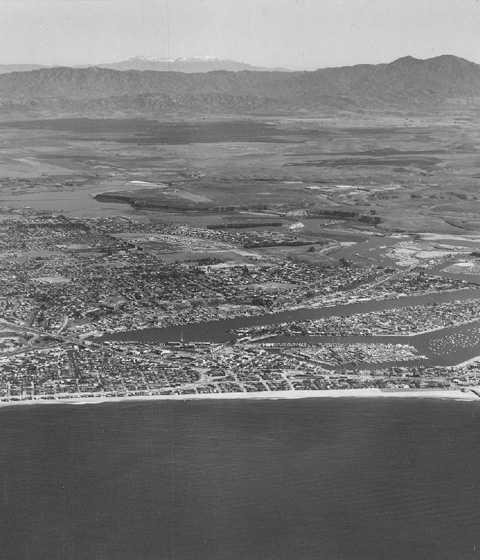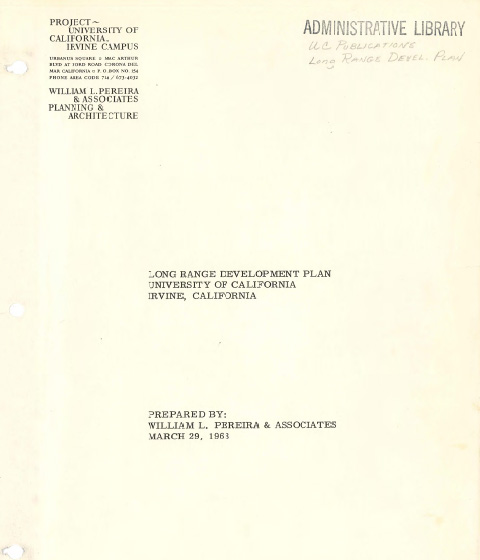Due to a projected growth in state population and University of California enrollments following World War II, California began exploring sites for a new UC campus in the late 1950s. From the 23 sites considered in the Los Angeles-Orange County area, portions of the Irvine Ranch were selected in 1960 for the new university because the site had, among other benefits, “desired nobility” and “great potential for development within a broad master plan framework.”
On January 20, 1961, 1,000 acres located several miles north of Newport Beach were sold to the UC Regents for $1 for the future site of UC Irvine. The 1963 land-use plan described the site as “gentle rolling land, with an inspiring outlook to the north and west over the Santa Ana Basin.”
UC Irvine’s 1963 Long Range Development Plan included areas for academic, housing, and commercial developments as well as landscaped and natural green spaces. The central campus’s circular design – a central ring and six radial malls – was selected “as a response to the climate, soil conditions and site, and as a method of giving the campus a ‘heart’ and a strong sense of identity from its earliest years.” Several proposed park features never came to fruition, however, including a small lake and the Centrum, a 300-foot-tall freestanding bell tower.




